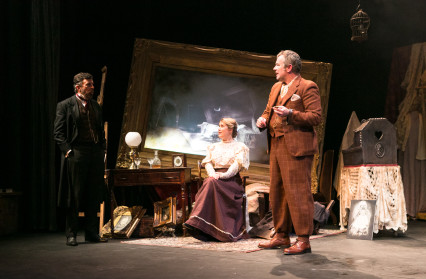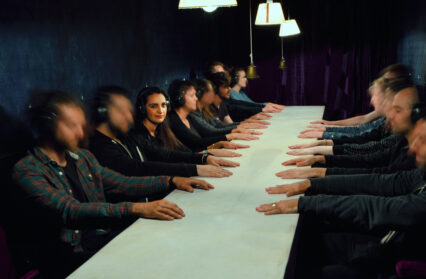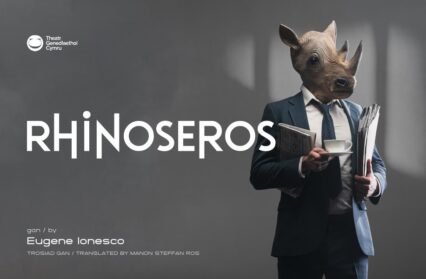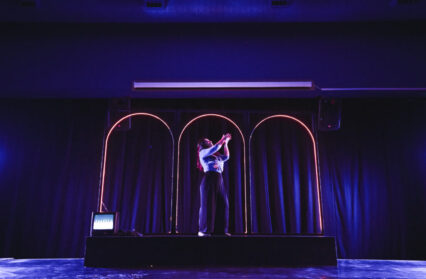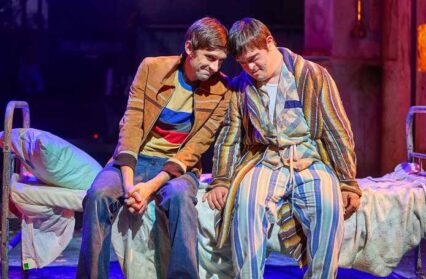Carly Holmes casts a critical eye over Mappa Mundi Theatre Company’s production of Still Life in collaboration with Theatr Mwldan.
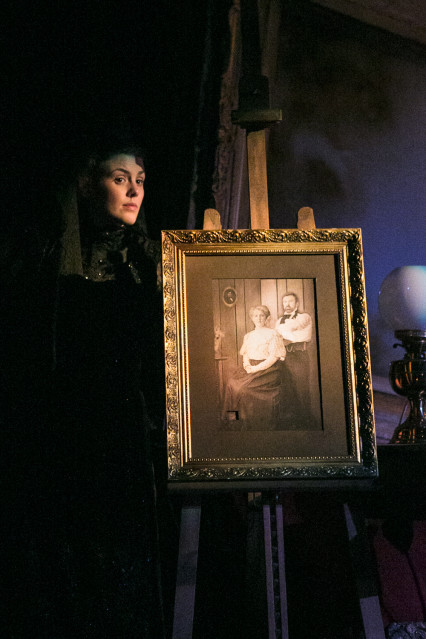 The stage-set of Mappa Mundi’s Still Life is an exquisite art work in itself, and one that the audience could spend hours looking at without needing any other distraction. Every inch of available space is stuffed with sumptuous brocade furniture, intricately-framed paintings, gilt-edged mirrors and ornate lamps. It is how I imagine Edgar Allen Poe’s drawing room would have looked: an excess of gothic Victoriana. I wanted it all.
The stage-set of Mappa Mundi’s Still Life is an exquisite art work in itself, and one that the audience could spend hours looking at without needing any other distraction. Every inch of available space is stuffed with sumptuous brocade furniture, intricately-framed paintings, gilt-edged mirrors and ornate lamps. It is how I imagine Edgar Allen Poe’s drawing room would have looked: an excess of gothic Victoriana. I wanted it all.
Theatr Mwldan have been successfully collaborating on critically acclaimed productions with Mappa Mundi for nearly a decade, each offering something to the partnership that enriches the final performance. Still Life is the latest co-production. It blends a number of ghost stories rooted in tales by classic horror writers Poe and M. R. James; each story threaded to the other by a single character who serves as both storyteller and active witness to the ghostly happenings as they unfold. By the last scene this figure, a photographer with a passion for recording death, has become fully immersed in the action: the main character in his own tale of horror.
This immersion is echoed in the framework of the production itself. The audience are addressed as though they are in a lecture hall, which lifts them from the usual passivity and warps the boundaries between the expectation of entertainment and what it is to be entertained. Eye contact is made, and direct appeals for judgement to be passed or withheld. The conceit: stories within a story, is cleverly conducted, and reflective of the Poe quote on the programme: ‘All that we see or seem, is but a dream within a dream.’
For enthusiasts of Victorian ghost stories each tableau will be familiar, and even without prior knowledge of the specific authors or their work the tropes of the genre are so well known that the only thing left to wonder over is exactly when the blood-curdling scream will echo around the theatre. It made me jump every time. That’s the joy of a good gothic ghost story; it doesn’t need to be new or original in order to please the audience. They already know what they’re in for and that’s why they’re there.
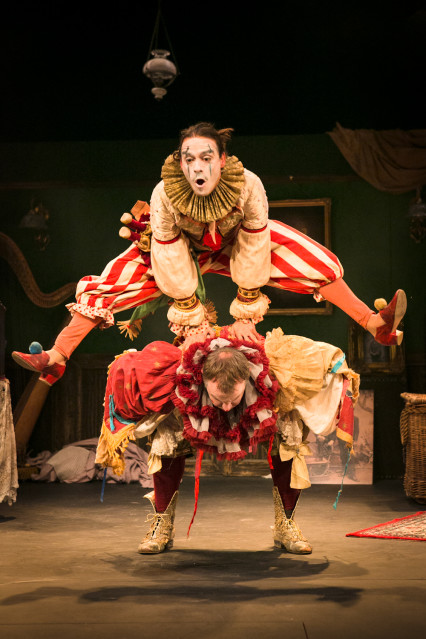 The first story was also the most visually confrontational; a murder, a crime of passion and rage, acted out so well that it was almost uncomfortable to watch. The subsequent haunting delivered the right amount of thrills, combining sound effects (a harp playing) with some deliciously jumpy moments. The dramatic tension was maintained through the next two stories and clever use was made of props and behind-the-scenes technology. A seemingly innocuous landscape painting is manipulated subtly throughout a story so that by the end the ghost looms at the very front of it. Suspended lamps start swinging by themselves. Even when a comic element is introduced there is an edge of the grotesque and the macabre. These characters are all trapped in their roles with no escape from their fate.
The first story was also the most visually confrontational; a murder, a crime of passion and rage, acted out so well that it was almost uncomfortable to watch. The subsequent haunting delivered the right amount of thrills, combining sound effects (a harp playing) with some deliciously jumpy moments. The dramatic tension was maintained through the next two stories and clever use was made of props and behind-the-scenes technology. A seemingly innocuous landscape painting is manipulated subtly throughout a story so that by the end the ghost looms at the very front of it. Suspended lamps start swinging by themselves. Even when a comic element is introduced there is an edge of the grotesque and the macabre. These characters are all trapped in their roles with no escape from their fate.
Through the final stories the focus shifts more onto the photographer and his increasing obsession with recording the moment of death. His beloved wife is sidelined by this greater preoccupation and as the production builds to its climax she becomes yet another ghost to haunt him. Fascinating though the details were around Memento Mori and the photographic advances of the era, the finale did prove ultimately underwhelming. It descended into the main character’s self-destruction and there was an overall tone of melancholy and helplessness which, after the energy of the first scenes, felt a little anti-climactic. It might have been better to end on a shiver of fear rather than of sorrow.
The acting throughout was superb, and the production as a whole was a visual delight. Every detail, from the huge mirror on the side of the stage that reflected the actors distorted through layers of grime, morphing them into ghoulish shapes, to the portrait photographs of Victorian families, which were possibly original Memento Mori themselves, was thoughtfully arranged to achieve maximum effect.
I came away from the evening with a different view of the gothic potential of the photographic image, and the narratives implicit within the photographer’s frame. For the Victorians, being able to capture their subjects with new technologies and pin them to paper sparked a passion that went beyond even the borders of the gravestone. Still Life is as much a meditation on this passion as it is an exercise in spooking an audience. Well worth seeing.
To find out more about the Mappa Mundi Theatre Company visit their website.
To find out more about upcoming productions taking place at Theatr Mwldan visit their website.
Carly Holmes is a writer and contributor for Wales Arts Review.
Photo credits: Jennie Caldwell


